November 2018
Christina, Remco, and Alexa attended the annual meetings of the Society for Social Neuroscience on Nov 2 and the Society for Neuroscience on Nov 3-7 in San Diego. Christina and Remco presented posters at both meetings and Christina gave a talk in a minisymposium on social motivation across the lifespan chaired by Alexa.
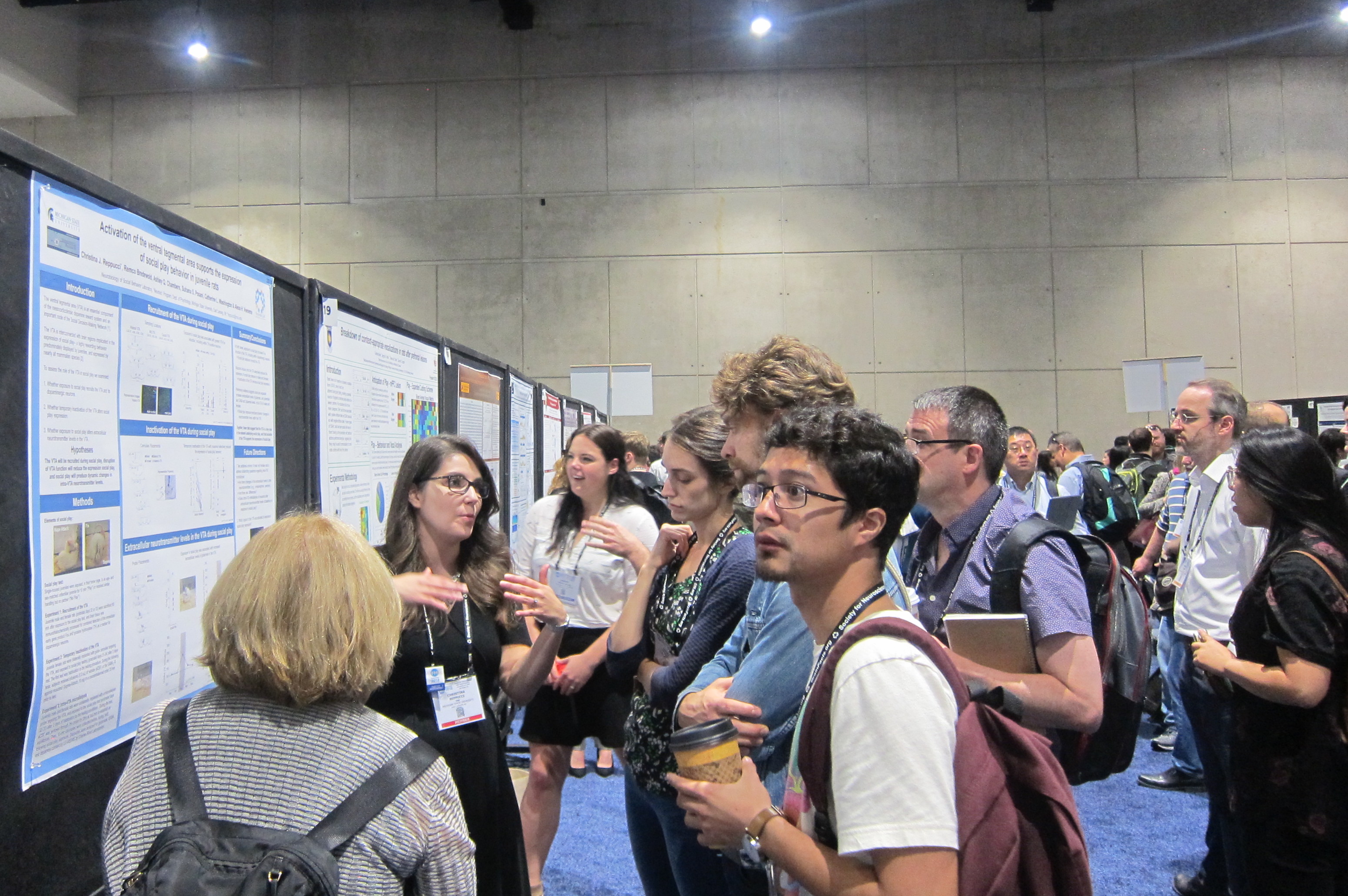


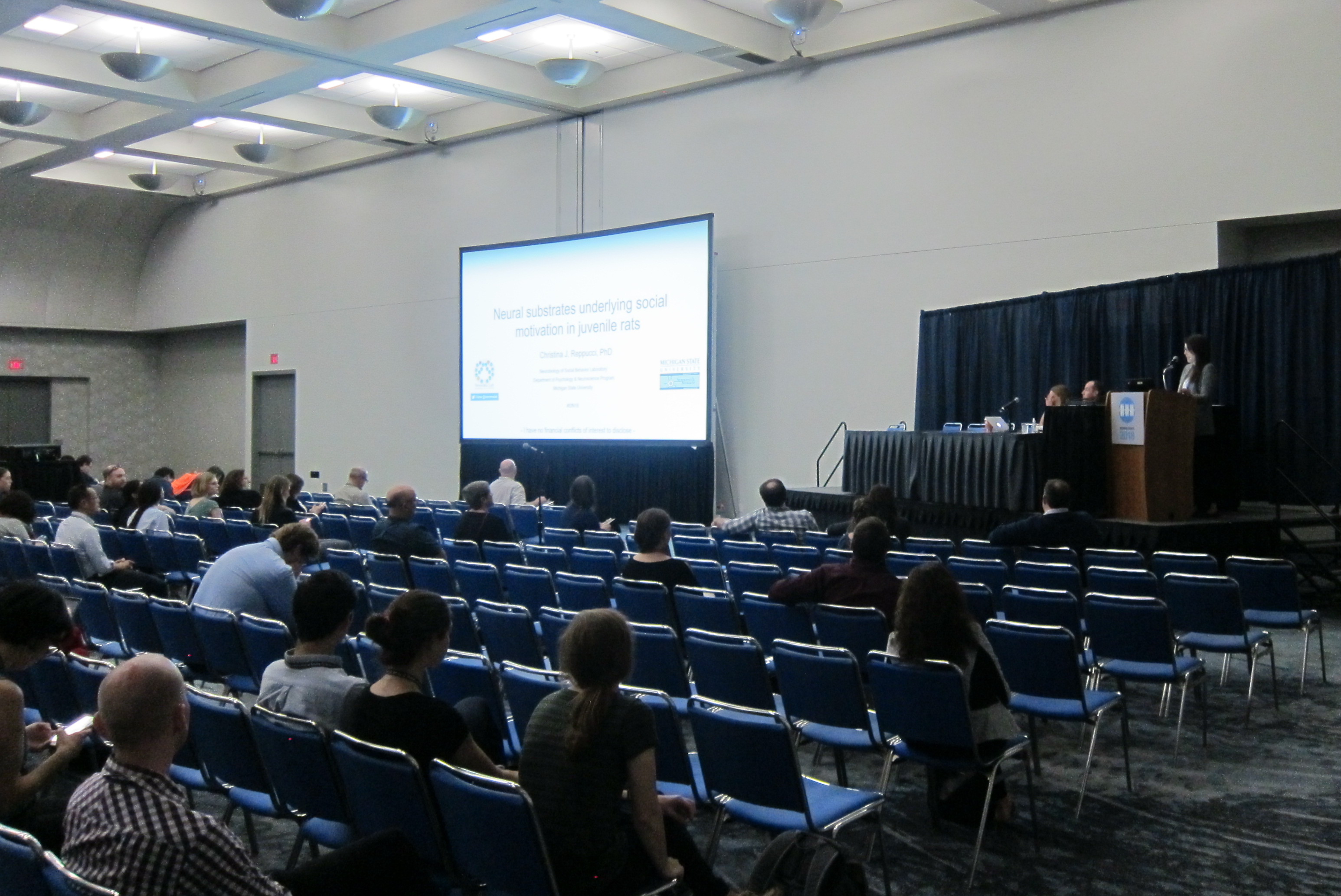
October 2018
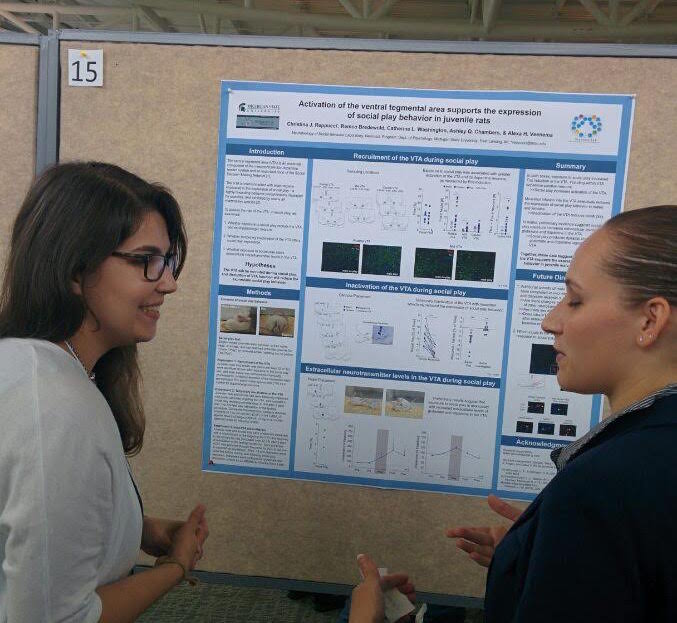
Christina attended the 2018 Southeast Michigan Postdoctoral Symposium at Wayne State University and presented a poster on her research on the role of the ventral tegmental area in juvenile social play behavior.
Alexa gave a talk at the MSU Center for Research on Autism, Intellectual, and other Neurodevelopmental Disabilities (C-RAIND) on the Function of sex differences in the brain for social behavior: Relevance for understanding sex bias in autism
July 2018
Christina and Remco presented their work at the 22nd annual meeting of the Society for Behavioral Neuroendocrinology and at the 9th International Congress of Neuroendocrinology holding a joint meeting in Toronto, Ontario, Canada.

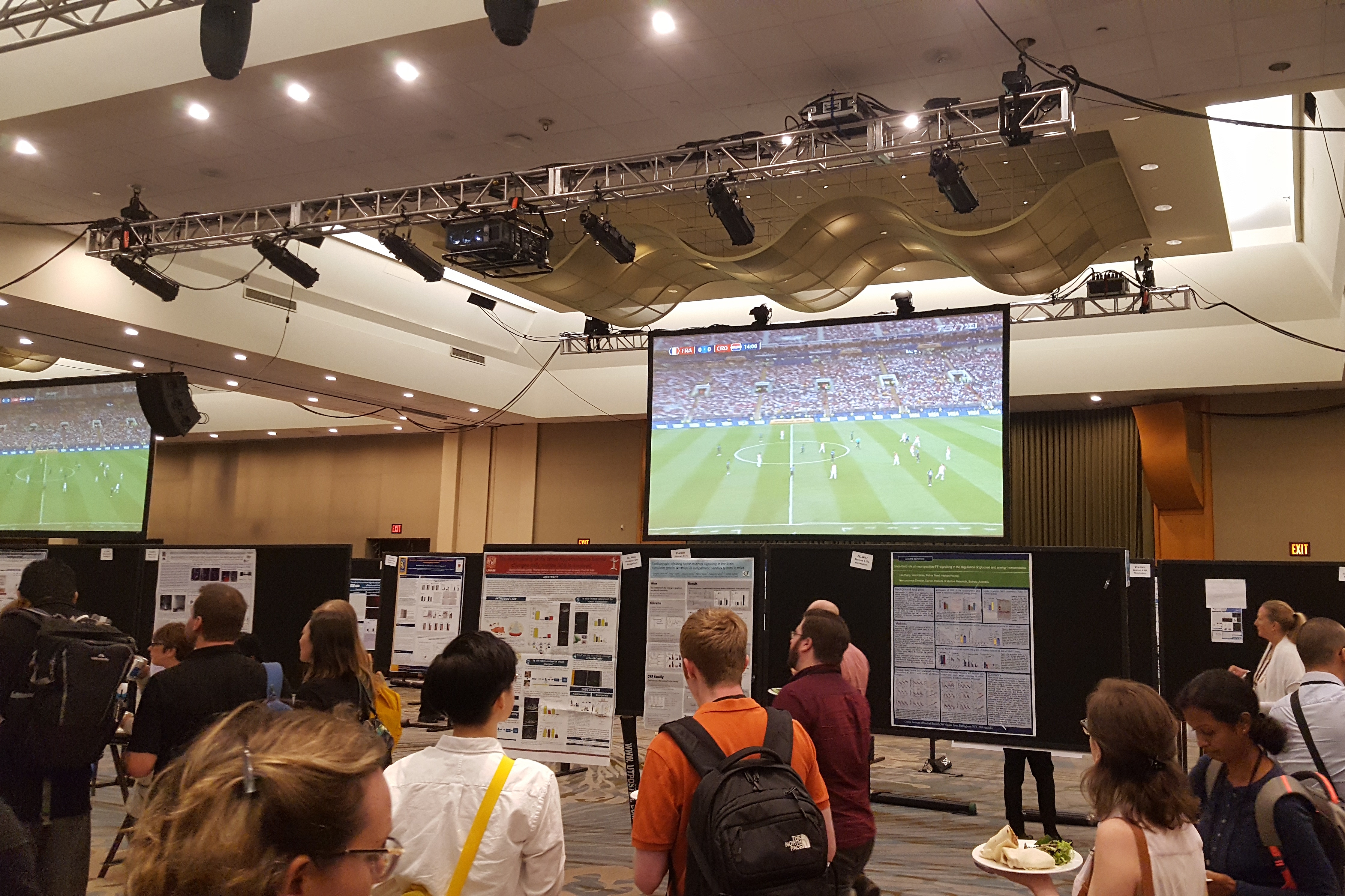
June 2018
Remco published a paper in the journal Neuropsychopharmacology entitled Involvement of dopamine, but not norepinephrine, in the sex-specific regulation of juvenile socially rewarding behavior by vasopressin. Remco and co-authors Nara Nascimento, Grace Ro, Shannon Cieslewski, Christina Reppucci and Alexa Veenema showed that the lateral septum vasopressin system interacts with the lateral septum dopamine system to regulate social play behavior in sex-specific ways. How the brain regulates social play behavior is poorly understood. This knowledge is important because exposure to social play behavior improves the development of social skills in humans and other animals. Moreover, social play behavior is impaired in children with autism spectrum disorder, which, in turn, may contribute to their social deficits throughout life. Using intracerebral microdialysis, Remco and co-authors were able to measure changes in the release of neurotransmitters during the display of social play behavior in male and female juvenile rats. They found that the release of the neurotransmitter dopamine (which plays a role in motivation and reward) is increased in the lateral septum (a brain region important for motivated behaviors including social behavior) during exposure to social play and in response to administration of vasopressin into the lateral septum in females, but not in males. Furthermore, pharmacological blockade of vasopressin neurotransmission in the lateral septum prevented the social play-induced increase in dopamine release in females. Finally, enhancing dopamine neurotransmission in the lateral septum counteracted the inhibiting effects of vasopressin neurotransmission blockade in the lateral septum on social play behavior in females. Overall, these findings demonstrate that vasopressin changes dopamine neurotransmission differently in males than in females, which results in the sex-specific regulation of juvenile social play behavior. Thus, despite similar levels of social play behavior in males and females, the neural basis regulating social play behavior is sex-specific. It is therefore possible that disturbances in vasopressin and/or dopamine systems (due to stress or other perturbations) could make one sex more vulnerable to the development of social play deficits, which will be a future research direction of the lab.
May 2018
Congrats to Ashley Chambers for receiving the Provost Undergraduate Research Initiative Award, which will allow her to work full-time in the lab over the summer!
April 2018
Ashley and Suhana presented posters on their research projects in the lab at the annual University Undergraduate Research and Arts Forum, showcasing more than 800 posters and talks by MSU undergrads.


March 2018
Remco and Alexa published a review paper in the journal Current Opinion in Neurobiology entitled Sex differences in the regulation of social and anxiety-related behaviors: insights from vasopressin and oxytocin brain systems discussing recent human and rodent studies showing the sex-specific involvement of the neuropeptides vasopressin and oxytocin in social and anxiety-related behaviors. They further propose that knowledge of vasopressin and oxytocin mediated sex-specific brain mechanisms can provide essential insights into how these neuropeptide systems contribute to sex-specific vulnerability as well as resilience to perturbations, with subsequent relevance to social and emotional disorders.
March 2018
Alexa gave a talk in the Human Development Initiative Speaker series hosted by Clinical Psychology at Michigan State University discussing research from the lab demonstrating that sex differences in the brain can function to induce as well as prevent sex differences in social behavior.
March 2018
Alexa gave a BioPsychology Colloquium in the Department of Psychology at the University of Michigan discussing the function of sex differences in the brain with a focus on vasopressin and oxytocin systems.
February 2018
Alexa hosted Dr. Brian Trainor, professor at UC-Davis who gave a MSU Neuroscience seminar discussing his recent work on the effects of social defeat stress on changes in brain and behavior in male and female California mice showing sex differences in the involvement of the oxytocin system in the bed nucleus of the stria terminals.
February 2018
Christina Reppucci published a paper in the Journal of Neuroendocrinology entitled Activation patterns of vasopressinergic and oxytocinergic brain regions following social play exposure in juvenile male and female rats. Based on previous work from the lab showing that vasopressin and oxytocin in the brain regulate social play in sex-specific ways, Christina and co-authors Cassandra Gergely and Alexa Veenema set out to determine whether there are sex differences in the recruitment of vasopressinergic and oxytocinergic brain regions following social play exposure in juvenile rats. They found sex differences in the activation of vasopressin and oxytocin neurons in the hypothalamic supraoptic regions (with more recruitment in males than in females) that was independent of play condition and possibly representing a sex difference in the baseline levels of vasopressin and oxytocin signaling required for typical functioning. They also found a sex difference in the activation of two brain regions synthesizing vasopressin (bed nucleus of the stria terminalis and medial amygdala; with higher activation in females) that were specific to play condition, providing further evidence that the neural substrates underlying social play behavior are sex-specific.
January 2018
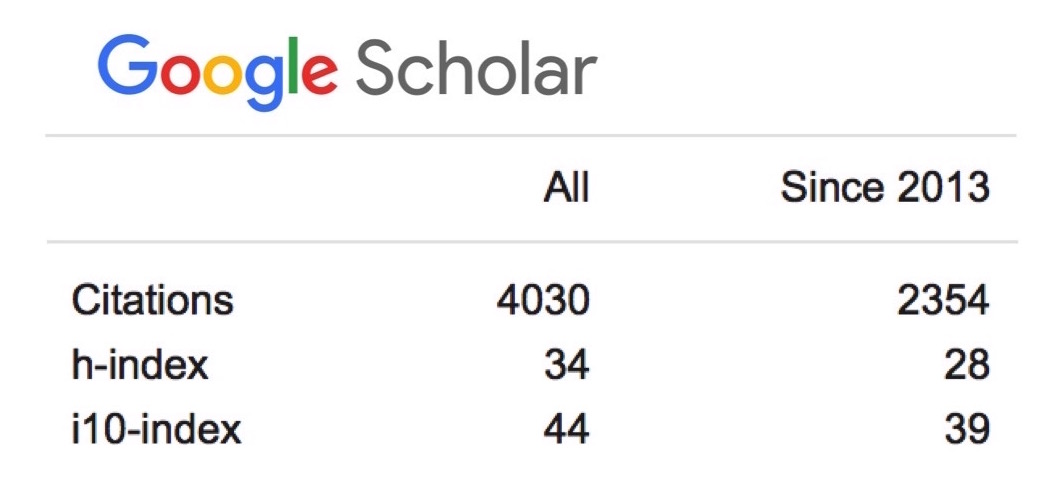
Alexa’s publications reached 4000 citations on Google Scholar with 551 citations in 2017!
